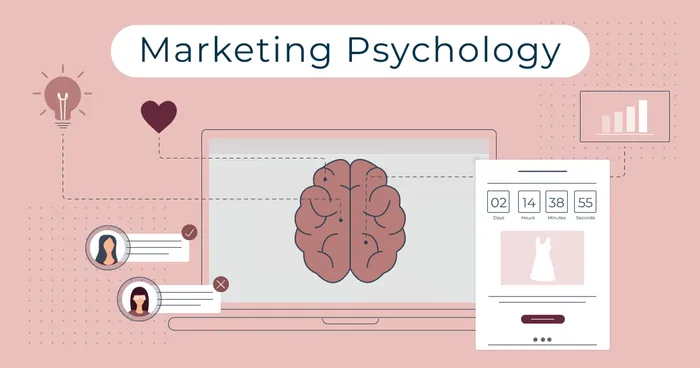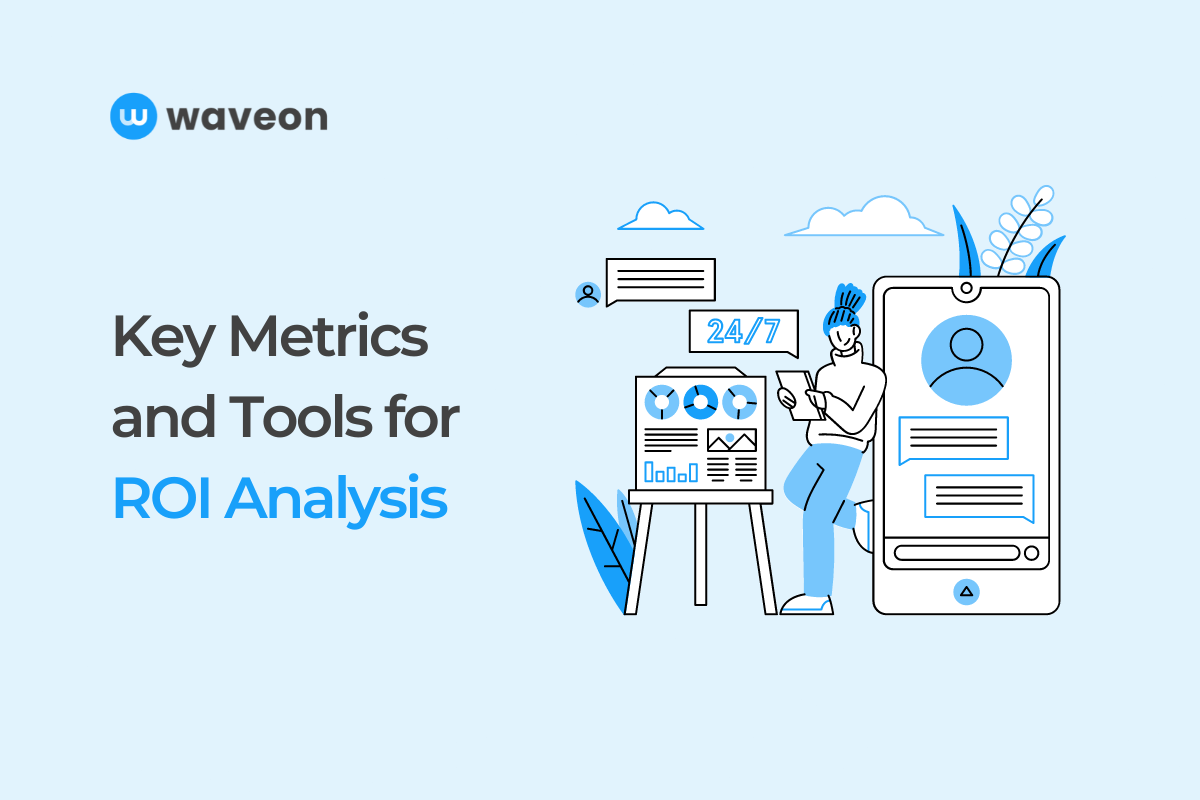Insight
Marketing Psychology : Understanding Consumer Behavior and Decision-Making
Waveon Team
7/12/2023
0 min read
blogTocHead

Introduction
Marketing psychology plays a pivotal role in helping businesses understand and influence consumer behavior and decision-making. By delving into the intricate workings of the human mind, marketers can gain insights into why consumers make certain choices and how they can effectively communicate their offerings. This article explores the fascinating field of marketing psychology, its significance in business, and its impact on consumer behavior.
Consumer Behavior
Definition and Scope of Consumer Behavior
[Consumer behavior]https://www.omniconvert.com/blog/consumer-behavior-in-marketing-patterns-types-segmentation/) refers to the actions, attitudes, and decision-making processes that individuals go through when purchasing and using products or services. It encompasses a wide range of activities, from recognizing a need or desire for a product to the post-purchase evaluation of satisfaction. Understanding consumer behavior is essential for marketers as it helps them identify and meet the needs and wants of their target audience effectively.
The scope of consumer behavior extends beyond the mere act of buying. It includes the study of consumer motivations, preferences, perceptions, and the factors that influence their decision-making process. By examining consumer behavior, marketers gain valuable insights into why consumers choose one brand over another, how they perceive products, and what factors drive their purchasing decisions.
Factors Influencing Consumer Behavior
Consumer behavior is influenced by various internal and external factors. These factors shape consumers' attitudes, preferences, and purchasing decisions. Here are three key categories of factors that impact consumer behavior
1. Psychological Factors
Psychological factors delve into the cognitive and emotional aspects of consumer behavior. These factors include perception, motivation, learning, attitudes, and personality traits. Perception refers to how individuals interpret and make sense of the information they receive from the marketing environment. Motivation drives consumers to satisfy their needs and desires, and marketers can leverage motivational theories to understand and tap into these motivations. Learning involves the acquisition of knowledge and experiences that shape consumer behavior, while attitudes represent individuals' evaluations and feelings towards products or brands. Personality traits also play a role in influencing consumer preferences and choices.
2. Social Factors
Social factors encompass the impact of social interactions, groups, and societal norms on consumer behavior. Family, friends, peers, and reference groups influence consumers' attitudes, beliefs, and purchasing decisions. Cultural factors, such as values, beliefs, customs, and traditions, also shape consumer behavior within a particular society or cultural group. Social influences can manifest in the form of social proof, where consumers look to others for guidance or validation when making decisions.
3. Cultural Factors
Cultural factors encompass the broader societal context within which consumers operate. They include cultural values, norms, customs, and beliefs. Culture influences consumer behavior by shaping individuals' preferences, tastes, and consumption patterns. Marketers must consider cultural factors when developing marketing strategies to ensure their offerings align with the cultural context and resonate with their target audience.
The Consumer Decision-Making Process
1. Problem Recognition
The process begins with the recognition of a need or problem. This occurs when consumers perceive a discrepancy between their current state (e.g., lack of a product or dissatisfaction with a current one) and their desired state (e.g., a need for a new product or an improved solution).
2. Information Search
Once the need is recognized, consumers engage in an information search to gather information about potential solutions or alternatives. This search can involve internal sources (memory, past experiences) or external sources (online research, seeking recommendations from others, advertising, etc.).
3. Evaluation of Alternatives
Consumers evaluate different alternatives based on criteria such as price, quality, features, and brand reputation. They compare the available options and assess their relative advantages and disadvantages.
4. Purchase Decision
After evaluating alternatives, consumers make a purchase decision, selecting the product or service they believe best fulfills their needs and preferences. Factors influencing the purchase decision can include price, brand loyalty, perceived value, and availability.
5. Post-Purchase Evaluation
Following the purchase, consumers evaluate their satisfaction with the product or service. This evaluation influences future buying decisions and can result in repeat purchases, brand loyalty, or word-of-mouth recommendations.
The Consumer Decision-Making Process
Understanding the consumer decision-making process is crucial for marketers. It consists of five stages : problem recognition, information search, evaluation of alternatives, purchase decision, and post-purchase evaluation. Consumers go through these stages when considering a purchase, and their behavior and decisions can be influenced at each step.
The Role of Psychology in Consumer Behavior
Psychology plays a pivotal role in consumer behavior, offering valuable insights into the cognitive and emotional processes that drive decision-making. Perception and attention affect how consumers perceive and interpret marketing messages, and marketers can leverage sensory marketing and brand perception to create impactful experiences. Motivation and needs guide consumers' desires and actions, and marketers can tap into motivational theories and Maslow's hierarchy of needs to understand consumer motivations.
Applied Marketing Strategies
Segmentation and Targeting
1. Market Segmentation
Market segmentation involves dividing a broad market into distinct subgroups of consumers who share similar characteristics, needs, and preferences. By segmenting the market, marketers can tailor their marketing efforts to effectively reach and engage specific consumer segments. Common segmentation variables include demographics (age, gender, income, etc.), psychographics (personality, values, lifestyle), behavior (usage rate, brand loyalty), and geographic location.
2. Target Market Selection]
Once the market is segmented, marketers need to identify the most attractive target market(s) to focus their resources and efforts. The target market consists of the specific segment(s) that a business aims to serve and satisfy. Marketers evaluate various factors, such as segment size, growth potential, profitability, and compatibility with the organization's capabilities, to select their target market(s). By targeting specific segments, marketers can tailor their marketing messages and offerings to resonate with the unique needs and preferences of those consumers.
Product and Brand Positioning
1. Differentiation
Product differentiation involves creating a unique and desirable position for a product or brand in the minds of consumers. Marketers identify and emphasize unique features, benefits, or attributes that set their product apart from competitors. Effective differentiation helps consumers perceive the product or brand as superior, solving their specific needs or offering added value. Differentiation can be achieved through product quality, design, performance, innovation, customer service, or branding.
2. Brand Personality
Brand personality refers to the human-like characteristics and traits associated with a brand. Marketers strategically cultivate a brand personality that resonates with their target audience and aligns with the brand's positioning. Brand personality can evoke emotions, build trust, and create a sense of connection with consumers. It influences consumer perceptions, preferences, and loyalty. Examples of brand personalities include excitement, sophistication, reliability, or sincerity.
Pricing Strategies
1. Perceived Value
Perceived value is the consumer's subjective assessment of the benefits received from a product or service compared to the perceived cost. Marketers need to understand how consumers perceive value and adjust their pricing strategies accordingly. Effective pricing strategies strike a balance between delivering superior value and capturing a fair return on investment. By highlighting the unique benefits, quality, or experience associated with the product, marketers can enhance the perceived value and justify premium pricing.
2. Price Psychology
Price psychology explores how consumers perceive and respond to different pricing strategies and tactics. Psychological pricing techniques, such as setting prices just below a round number ($9.99 instead of $10), utilizing prestige pricing (setting higher prices to convey exclusivity), or offering discounts and promotions, can influence consumer perceptions of value and purchase decisions. Understanding the psychological aspects of pricing allows marketers to optimize pricing strategies for maximum impact.
Promotional Strategies
Emotions play a significant role in consumer decision-making. Effective promotional strategies leverage emotions to create memorable and persuasive advertising campaigns. Emotional appeals can evoke joy, fear, excitement, nostalgia, or empathy, depending on the target audience and the desired response. By connecting emotionally with consumers, marketers can forge stronger brand connections and enhance engagement.
Ethical Considerations in Marketing Psychology
While marketing psychology can be a powerful tool, ethical considerations must be at the forefront of every marketer's mind. Balancing persuasion with manipulation is crucial to maintain trust and credibility. Respecting consumer privacy and ensuring data protection are paramount in an era where personal information is a valuable asset. Additionally, businesses should embrace social responsibility in their marketing practices, ensuring they contribute positively to society and address societal concerns.
Conclusion
Marketing psychology provides invaluable insights into consumer behavior and decision-making processes. By understanding the psychological factors that drive consumer choices, businesses can create more effective marketing strategies and ultimately improve their bottom line. Ethical considerations should always be at the forefront of these endeavors, ensuring responsible and respectful practices. As technology and consumer expectations continue to evolve, marketers must stay abreast of future trends in marketing psychology to remain relevant and successful. By embracing the principles of marketing psychology, businesses can forge stronger connections with consumers and thrive in the ever-changing marketplace.












